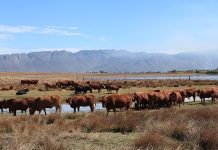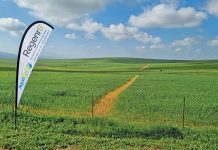Over the past few years, the Centre for Development and Enterprise (CDE) has worked intensively on land reform, identifying key issues and obstacles and presenting government and other stakeholders with alternative ways of achieving the land reform goals set out in the constitution. In October last year the CDE convened a round table which brought together a cross-section of commercial white farmers and black emerging farmers representing South Africa’s nine provinces. There were also representatives from the finance and development industries, one from the Land Claims Court and five from farming co-ops.
The discussion revealed some unintended consequences of the restitution process that could potentially cripple the agricultural sector, to the extent that SA could become totally reliant on imports to feed the population. Most representatives agreed to participate in the discussion on condition of confidentiality. One who did not insist on anonymity was Bongani Linda who farms with sugarcane in the Stanger area on the North Coast of KwaZulu-Natal. As one of the keynote speakers, he told delegates how he was drawn to farming by a sugar miller and neighbouring white commercial farmers. Through an LRAD grant and CASP funding, Bongani was able to enter the highly competitive industry and grow his operation over the last six years. But in January this year, a land claim cast doubt over his future.
Another participant, a successful black female farmer confirmed that many emerging farmers who’d obtained their land through redistribution or on the open market were now finding themselves subject to land claims by communities. “I acquired 10,7ha in a commercial transaction,” she said. “It was just open land with no infrastructure, water or electricity. I’ve developed it from nothing over a period of three years.” Her land, along with all her neighbour’s farms, have now been claimed. Like Bongani, she’s no longer certain of her future as a farmer in South Africa. She was hoping to become a role model for other women, proving that through hard work one could earn a decent living from agriculture. She wanted to showcase her business to boost government programmes such as the Women in Agriculture and Rural Development (Ward) Association. “This now sends a message to other Ward members who might want to commercialise that this isn’t possible,” she laments.
While Bongani and his female counterpart are not the first local farmers to grapple with the reality of restitution claims, a delegate from one of the farmer’s unions warns that they, too, may follow the lead of many farmers who get what they can for their land in Africa and move to neighbouring countries in search of more secure farming environments. “Commodity prices are high. It’s been decades since we last had such good prices, but we don’t see the concurrent hike in investment in agriculture,” he noted, adding that even in northern KZN, where the best land reform success stories are occurring, large numbers of farmers are extending their operations into Mozambique, Malawi and Botswana. “It’s relatively easy to establish yourself there, it’s profitable and the input costs are much lower. I fear a day when we might become a net importer of our own products from our own farmers working in neighbouring countries,” this participant warned.
A number of participants spoke of the difficulties of communicating with national or regional land claims officials and the lack of trust that has hampered the restitution process. According to one participant, the Department of Land Affairs was simply ignoring comprehensive plans drawn up by various agricultural industries, especially long-term industries such as timber. The consequences would make themselves felt in the long run, he warned. “At the moment we have a flood of younger timber, but eight or 10 years down the line, we’ll have mills without any input. Some of them will have to close down, perhaps for a few months every year. Can you imagine what this would do to prices in building and other industries?” Several participants noted that more timber and sugar was being grown by South Africans outside the country and saw this as an illustration of a long-term agribusiness downturn in Africa, due to policy uncertainties. – Jasper Raats








